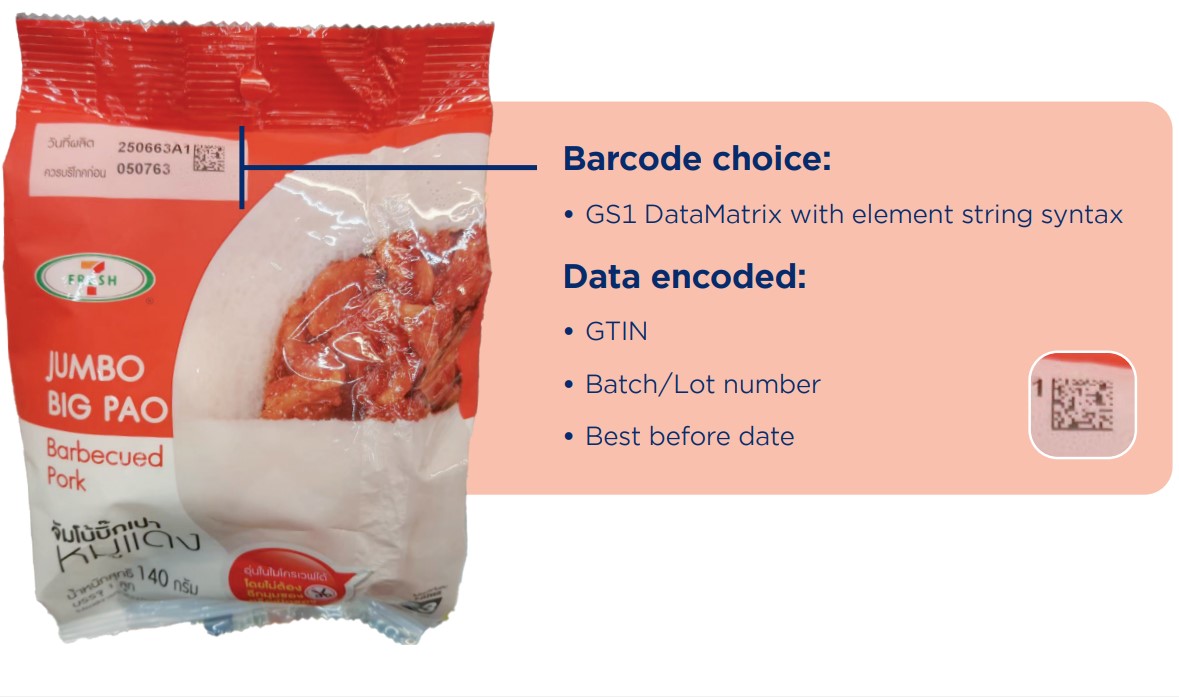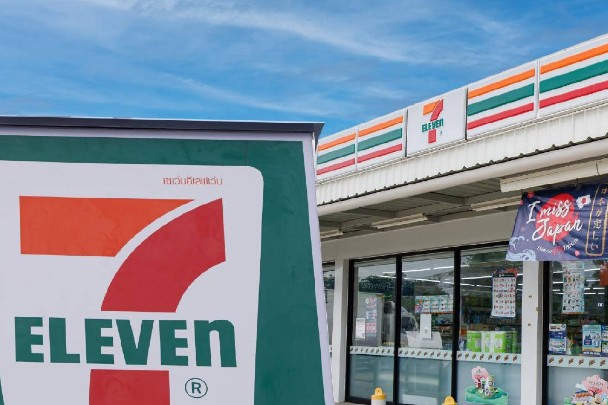A 7-Eleven store can be found on practically every street corner in Thailand. With over 11,000 stores serving over 11 million customers each day, the country has the third-largest number of 7-Elevens in the world.
Almost anything is available, from toiletries and drugs to microwaveable meals and freshly brewed coffee, but their ready-to-eat meals and “grab-and-go” items are especially popular.
As with any retailer, managing the expiration dates on these fast moving products can present a real challenge. If products that have reached or passed their “best before” dates get sold, the consequences can be severe including potentially serious health and safety issues for consumers.
Unfortunately, manually checking every date on every product is an incredibly time-consuming and labour-intensive activity that is subject to human error. That is why 7-Eleven in Thailand launched a project to prevent the sale of expired products with the help and support of GS1 Thailand.

A new dimension in barcodes
GS1 Thailand recommended the retailer use two-dimensional (2D) barcodes powered by GS1. In addition to holding a GS1 Global Trade Item Number® (GTIN®), these high-capacity multi-purpose 2D codes can also hold a product’s batch or lot number, serial number, “best before” date or expiration date, and more.
GS1 also helped 7-Eleven understand the various pros and cons of using GS1 DataMatrix barcodes or using QR Codes powered by GS1.
Ultimately the retailer chose to use GS1 DataMatrix barcodes, mainly because GS1 DataMatrix is smaller in size than QR Codes and, as a result, would take up less space on their product packaging.
To get going, the project team at 7-Eleven Thailand worked with CPRAM Company Limited, a 7-Eleven supplier which produces and distributes ready-to-eat frozen and chilled foods and freshly-made bakery items.
Harn Engineering Solutions Public Company Limited, an expert in printing solutions, supported 7-Eleven across the implementation of this project.
Implementation
To get all the benefits of 2D barcodes, 7-Eleven needed to make a few changes.
First, they adjusted the packaging of their own-brand products to create a space appropriate for the new barcode.
At their factory, they upgraded their production line printers and deployed software that allowed those new printers to automatically create 2D barcodes encoded with GTIN numbers and “best before” dates.
Then, at their retail stories, they upgraded point-of-sale scanners to ones that can efficiently read GS1 DataMatrix and other 2D barcodes. They also created new operational processes – for example, managing what to do if an expired product is scanned.

We are saving time, simplifying operations in stores, making our stock management processes more efficient and most importantly, not letting any products past their ’best before’ dates get into the kitchens of our consumers.”
Chakrit Hengsirikul
Head of Unit, Research and Knowledge, Architecture and Design Group 7-Eleven
Benefits realised
As of early 2023, about one hundred ready-to-eat items for sale in over 12,000 7-Eleven Thailand retail stores have a GS1 DataMatrix on their packaging, and 7-Eleven cashiers have equipment capable of reading all the information that is now packed into those tiny barcodes – including “best before” dates.

It’s an extremely simple process: if a cashier scans an expired product, a message pops up on the register’s screen indicating that the product has expired and must not be sold, stating "please provide a new product to the customer and immediately remove the expired product from our shelves”.
“Our quality assurance processes have become both stronger and easier,” says Chakrit Hengsirikul, Head of Unit, Research and Knowledge, Architecture and Design Group at 7-Eleven Thailand, “We are saving time, simplifying operations in stores, making our stock management processes more efficient and most importantly, not letting any products past their ‘best before’ dates get into the kitchens of our consumers.”
7-Eleven has seen increased rates of consumer satisfaction and complaints about expired products went to zero. Customers have mentioned feeling more confident while shopping for prepared meals and grab-and-go items at 7-Eleven.
Next steps
The project has encouraged 7-Eleven Thailand to create a broader development and rollout plan. The company intends to expand the use of 2D barcodes to more product categories and more types of items from CPRAM and from other suppliers.
They also plan to put GS1 DataMatrix barcodes on their store-brand baked goods. In fact, they envision phasing out traditional one-dimensional barcodes entirely in favour of ensuring every item in their stores has a two-dimensional barcode.
They recognise that GS1 DataMatrix barcodes and QR Codes powered by GS1 bring a whole range of ways to improve business operations and deliver better experiences for consumers. All because 2D barcodes powered by GS1 are able to hold a lot more information while still going “beep” at the register.
Get started connecting your products
GS1 Digital Link
The GS1 Digital Link standard enables GS1 identifiers to be used as a gateway to online information.
Implementation guides and resources icon
Learn how effectively using Digital Link can improve your business and customer experience.
GS1 Digital Link training
Now more than ever, consumers are looking for product transparency. Find out how advanced barcodes could power the future of commerce.
